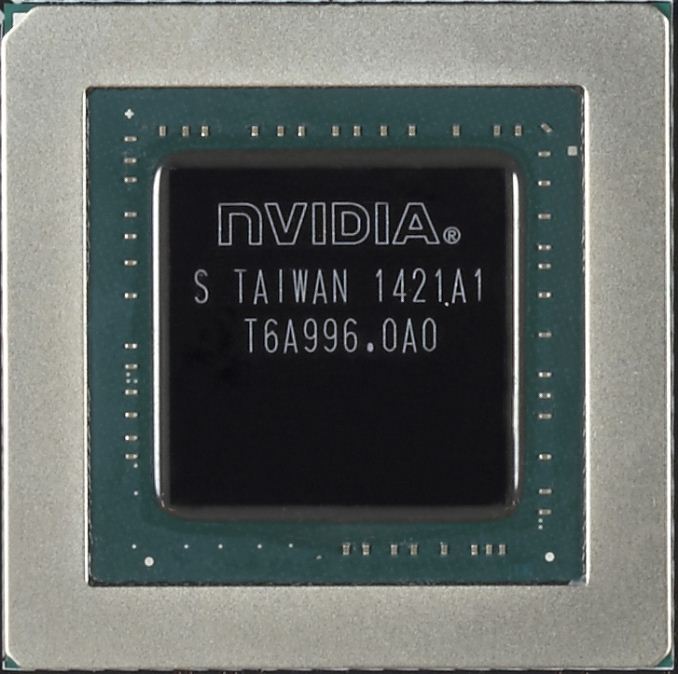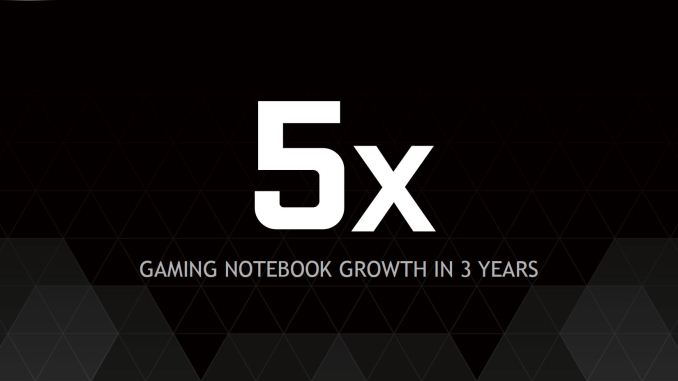NVIDIA GeForce GTX 980M and GTX 970M: Mobile to the Maxwell
by Jarred Walton on October 7, 2014 9:00 AM EST
Every year NVIDIA launches quite a few new products; some are better than others, but they're all interesting. This fall, the big news is Maxwell 2.0, aka GM204. Initially launched last month as the GTX 980 and GTX 970, NVIDIA is hopefully changing the way notebook gamers get treated by launching the mobile version of the GM204 just one month later.
We've already covered all of the new features in the desktop launch, so things like DSR, FXAA, VXGI, DX12, and GameWorks are all part of the notebook launch marketing materials. Of course, as a notebook GPU there are a few extra features available that you don't see on desktop GPUs, mostly because such features aren't really needed. Optimus Technology has been around for several years now so there's not much to add; it allows laptops to dynamically switch between the lower power integrated graphics when you're not doing anything that requires a faster GPU, and it can turn on and utilize the faster discrete NVIDIA GPU when needed. BatteryBoost is a related technology that was first introduced with the GTX 800M series of GPUs, and it seeks to improve gaming battery life. Our test platform at the time didn't really give us the gains we were hoping to see, but NVIDIA assures us that the new GM204 mobile graphics chips will do much better at providing decent battery life while running games. We'll be diving into this in more detail once we get our test notebooks.
Speaking of which, no, we don't have a notebook yet. It was supposed to arrive late last week but ended up shipping Monday instead, which means it should be arriving about the time you're reading this. We'll be posting a separate look at gaming performance as soon as we're able, and we'll have a full review of the MSI GT72 in the coming week as well. For now, what we have are specifications for the mobile versions of GM204 and an overview of what to expect from the mobile versions of NVIDIA's new GPU.
If you've been following the computing industry to any degree over the past few years, a few trends are clearly becoming ever more important. One is that many PC desktop users are migrating to laptops and notebooks, but perhaps just as important is the migration of PC users to smartphones and tablets. There are numerous reasons for the shift – convenience along with increasing performance from handheld devices – but the result is a reduction in the growth of the PC industry. The good news for NVIDIA is that gaming notebooks are still a growing market, though how you define a "gaming notebook" is certainly something that can be manipulated.
NVIDIA's own figures show a 5X growth in gaming notebook sales during the past three years, so clearly there's a demand for getting more graphics performance into laptops. In fact, that's generally the number one desire from notebook gamers: "I want desktop class performance!" NVIDIA is aiming to do just that with the launch of the GTX 980M and GTX 970M.












68 Comments
View All Comments
ruggia - Tuesday, October 7, 2014 - link
Well, I think you meant stagnation in 1080p gaming requirement, not stagnation in GPU performance. PC cards have indeed reached the required performance of 1080p gaming 5 years ago. Since then, focus have been shifted on supporting higher resolutions (1440p/4k) or higher frame rates (100+Hz), which haven't been possible 5 years ago. Right now, even a low end card can easily best your GTX260 card without problem.ezorb - Tuesday, October 7, 2014 - link
I have an I7-920@3.2Ghz and a 2600k@4.5Ghz both rock solid. The single generation is just as great as the Core 2 to Nehalem , and the power consumption and noise are half on the sandy bridge and even less at idol. The 4770k@stock Ghz is faster than the 2600k@4.5Ghz, so I disagree, but clearly you have LOW standards cause i ditched the GTX 260 for a 5870, which was a massive improvmentEzioAs - Tuesday, October 7, 2014 - link
By your assumption, a 290X should be around 167% faster than the 5870...therefore an average performance increase of 41% per year.RussianSensation - Tuesday, October 7, 2014 - link
EzioAs,290X is 2.95X faster (or 195% faster) than an HD5870. Here are the breakdowns from 2009:
AMD = using 5870 as base of 100%
290X (max) = 295% (so nearly 3x faster)
HD7970Ghz = 229%
HD6970 = 129%
HD5870 = 100%
Nvidia = using 480 as base of 100%
980 (extrapolated from 780Ti) = 261%
780Ti = 248%
GTX680 = 162%
GTX580 = 119%
GTX480 = 100%
http://www.computerbase.de/2013-12/grafikkarten-20...
and
http://www.computerbase.de/2014-09/geforce-gtx-980...
Moving from 5870 (score of 30.1) vs. 980 (score of 105.1) is an increase of 3.49X. Therefore, GPU performance increased ~ 3.5X from the time HD5870 launched in Sept 2009 if one were to get a GTX980 today or an average increase of ~36.7% per year from 5870's launch.
nathanddrews - Tuesday, October 7, 2014 - link
60% of the time it works every time.EzioAs - Tuesday, October 7, 2014 - link
I was just correcting Razyre.His number indicates that the 7970 is 2x faster than the 5870 and the 290X is 30% faster than the 7970. You do the math, and you get that the 290X is 2.6x faster than the 5870.
RussianSensation - Tuesday, October 7, 2014 - link
Some good points. However, the only reason 980M is much closer to the 980 is because 980 is a mid-range Maxwell, GM200/210 will be high-end. The comparison NV uses is completely flawed because 880M is a mid-range Kepler (GK104) so of course it will be 50-60% as fast as the flagship of that generation - 780Ti. The same is true for 480 vs. 480M and 580 vs. 580M because 480 and 580 were flagship GPUs.Let's see what happens when GM200/210 come out and compare it to 1080M GM204 and the performance will grow again in favour of the desktop flagship GPU. NV is just playing marketing right now comparing a high-end mobile Maxwell card against a mid-range Maxwell desktop card by calling 980 a "flagship" desktop Maxwell chip -- which it isn't, even remotely.
azazel1024 - Tuesday, October 7, 2014 - link
It depends on how you define "not improved". My AMD 5570 just died a couple of days ago and I ordered a GTX750. Looking at just raw numbers, it is between 150-250% faster than my 5570. I'll grant it is maybe closer to a 5670 in terms of locating it on the performance tier...but even against a 5670 it is at a minimum >100% faster in everything and in most things still in the area of >150% faster. That is in basically 4 years, for the same price and very slightly higher to somewhat lower power consumption, you get more than doubled the performance.Sure, I wouldn't mind more, but I also won't complain either.
tviceman - Tuesday, October 7, 2014 - link
The performance delta between the 980m and 970m is disappointing. Since notebook parts typically don't overclock as well, a smaller delta of ~20% would have been sufficiently enough to keep the 980m well in front of the 970m. As it sits now, 30% is really, really large.EzioAs - Tuesday, October 7, 2014 - link
This is quite normal for Nvidia mobile GPUs right? Considering the price delta will also be just as high